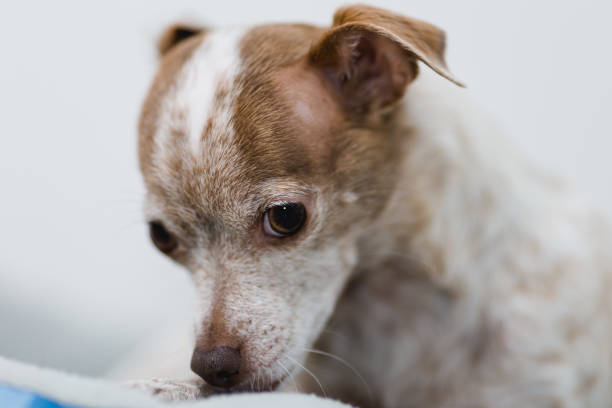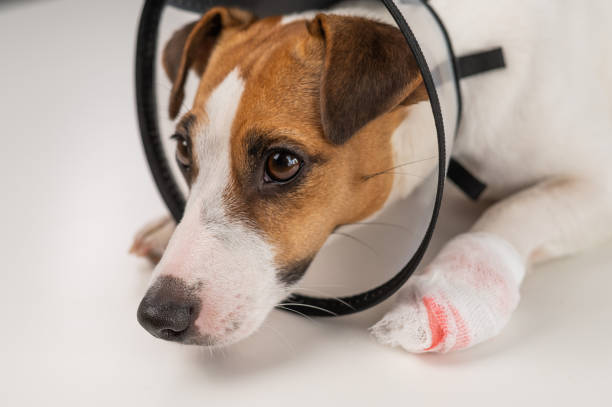Vestibular Old Dog Disease Symptoms and Diagnosis
This post contains affiliate links. This means I will make a commission at no extra cost to you should you click through and make a purchase. Read the full disclosure here.
Have you noticed your furry companion displaying sudden balance issues, head tilting, or abnormal eye movements? These could be signs of a condition known as Vestibular Old Dog Disease. In this article, we will explore the symptoms and diagnosis of this condition, providing you with valuable insights to help you understand and address it.
Introduction
Vestibular Old Dog Disease, also known as Canine Vestibular Syndrome or Idiopathic Vestibular Disease, is a neurological condition that primarily affects older dogs. It is characterized by sudden onset balance problems, disorientation, and abnormal eye movements. While it can be alarming to witness, this condition is generally not life-threatening and can often resolve on its own with proper care and support.
What is Vestibular Old Dog Disease?
Vestibular Old Dog Disease is a disorder that affects the vestibular system, which is responsible for maintaining a dog’s balance and spatial orientation. The vestibular system includes structures within the inner ear and brain that help the dog perceive its position in relation to gravity. When this system malfunctions, it can result in various symptoms associated with balance and coordination.
Common Symptoms of Vestibular Old Dog Disease
The symptoms of Vestibular Old Dog Disease can appear suddenly and may vary in severity from dog to dog. Some common signs to watch out for include:
- Head Tilt: A noticeable tilt of the dog’s head to one side.
- Loss of Balance: Difficulty in walking or standing, often resulting in staggering or falling.
- Abnormal Eye Movements: Rapid, uncontrolled eye movements known as nystagmus.
- Disorientation: Confusion, dizziness, and a general lack of coordination.
- Nausea and Vomiting: Some dogs may experience these symptoms due to the disturbance in their balance.
Causes of Vestibular Old Dog Disease
The exact cause of Vestibular Old Dog Disease is often unknown, hence the term “idiopathic.” However, there are a few factors that may contribute to its development. These include:
- Inner Ear Infections: Infections in the middle or inner ear can lead to vestibular problems.
- Head Trauma: Injury to the head or brain can disrupt the vestibular system.
- Tumors: In rare cases, tumors near the ear or brain can affect the vestibular system.
- Underlying Health Conditions: Certain systemic diseases or metabolic imbalances can trigger vestibular symptoms.
Diagnosing Vestibular Old Dog Disease
When presented with a dog displaying vestibular symptoms, a veterinarian will perform a thorough physical examination and may recommend additional diagnostic tests. These tests could include blood work, imaging studies (such as X-rays or MRIs), or analysis of inner ear fluid. The purpose of these tests is to rule out other potential causes of the symptoms and confirm a diagnosis of Vestibular Old Dog Disease.
Treatment Options
In most cases, treatment for Vestibular Old Dog Disease involves supportive care to manage the symptoms and aid in the dog’s recovery. The specific treatment plan may vary depending on the severity of the symptoms and underlying causes. Some common treatment options include:
- Medication: Medications may be prescribed to alleviate nausea, dizziness, and other associated symptoms.
- Fluid Therapy: In severe cases, dogs may require intravenous fluids to maintain hydration.
- Environmental Modifications: Creating a safe and comfortable environment for the dog to prevent accidents or injuries.
- Physical Therapy: Rehabilitative exercises and physiotherapy can help improve balance and coordination.
Home Care for Dogs with Vestibular Old Dog Disease
If your dog is diagnosed with Vestibular Old Dog Disease, there are several steps you can take to provide them with appropriate care at home. These include:
- Keep the Environment Safe: Remove any obstacles or hazards that could cause your dog to stumble or fall.
- Assist with Mobility: Provide support when your dog needs to walk or go outside for bathroom breaks.
- Adjust Diet: Offer easily digestible, balanced meals to prevent any stomach upset.
- Provide Comfort: Create a quiet and comfortable space for your dog to rest and recover.
- Offer Emotional Support: Be patient and provide reassurance to your furry friend during this challenging time.
Prevention Tips
While it may not always be possible to prevent Vestibular Old Dog Disease, there are a few measures you can take to reduce the risk or severity of the condition:
- Regular Veterinary Check-ups: Schedule routine check-ups to monitor your dog’s overall health and detect any potential issues early on.
- Maintain a Clean Environment: Keep your dog’s ears clean and free from infection-causing agents.
- Avoid Head Trauma: Take precautions to prevent head injuries, such as using a harness instead of a collar during walks.
- Maintain a Healthy Lifestyle: Provide a well-balanced diet, regular exercise, and appropriate weight management to support your dog’s overall well-being.
When to Consult a Veterinarian
If you observe any symptoms of Vestibular Old Dog Disease in your pet, it is essential to consult a veterinarian for an accurate diagnosis and appropriate guidance. Additionally, seek veterinary care if your dog’s symptoms worsen or do not improve over time.
Conclusion
Vestibular Old Dog Disease can be a distressing condition to witness in your canine companion, but with proper care and support, most dogs can recover or manage their symptoms effectively. By understanding the symptoms, causes, and treatment options, you can provide the necessary care to help your furry friend through this challenging time.
FAQs
1. Is Vestibular Old Dog Disease contagious?
No, Vestibular Old Dog Disease is not contagious and cannot be transmitted to other dogs or humans.
2. Will my dog fully recover from Vestibular Old Dog Disease?
Many dogs show significant improvement within a few weeks or months, but the recovery timeline can vary. Some dogs may experience residual symptoms or occasional relapses.
3. Can Vestibular Old Dog Disease be prevented?
While it may not always be preventable, maintaining your dog’s overall health, hygiene, and safety can help reduce the risk or severity of the condition.
4. Should I restrict my dog’s activities during recovery?
It’s generally recommended to limit strenuous activities and provide a safe environment for your dog to prevent accidents, especially during the initial stages of recovery.
5. Can Vestibular Old Dog Disease affect a dog’s quality of life?
Most dogs with Vestibular Old Dog Disease can lead fulfilling lives with appropriate care. However, the impact on their quality of life may vary depending on the severity of the symptoms and the presence of any underlying conditions.








![The Pregnant Jack Russell Terrier [Important things you need to know] The Pregnant Jack Russell Terrier [Important things you need to know]](https://jackrusselterrier.net/wp-content/uploads/2023/03/istockphoto-1330401249-612x612-1.jpg)

![How to stop a Jack Russell Terrier from Stealing Eggs from The Chicken Coop! [7 helpful tips] How to stop a Jack Russell Terrier from Stealing Eggs from The Chicken Coop](https://jackrusselterrier.net/wp-content/uploads/2023/03/istockphoto-1222036971-612x612-1.jpg)

